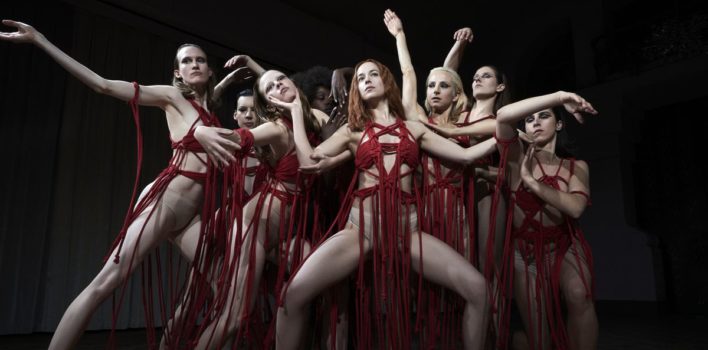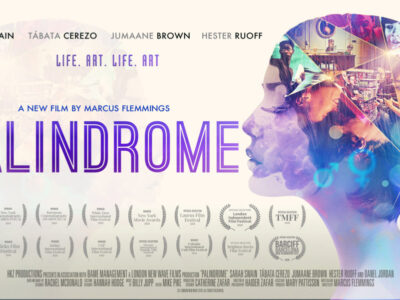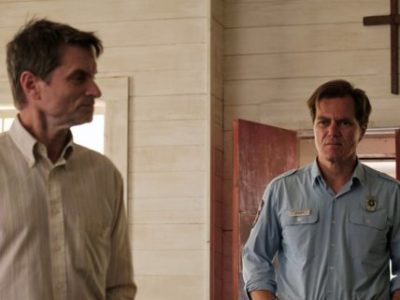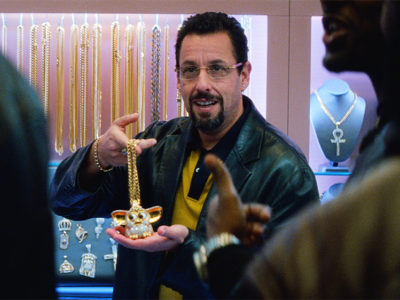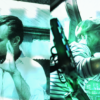Review| Suspiria (2018)
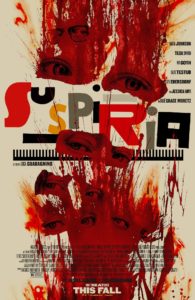 The film reviews coming out of major news and cultural commentary sites seem to fall within two categories when attempting to grapple with Luca Guadagnino’s Suspiria: heartened, passionate praise for its visual flair and technique or a negatively-imbalanced recognition of its divisiveness. Both sides have a point. Guadagnino has a unique visual language that is wielded in equal parts creative aplomb–with sparse moments of hat-tipping to Dario Argento’s original fever dream–and reckless abandon–sometimes feeling like it included everything and the kitchen sink.
The film reviews coming out of major news and cultural commentary sites seem to fall within two categories when attempting to grapple with Luca Guadagnino’s Suspiria: heartened, passionate praise for its visual flair and technique or a negatively-imbalanced recognition of its divisiveness. Both sides have a point. Guadagnino has a unique visual language that is wielded in equal parts creative aplomb–with sparse moments of hat-tipping to Dario Argento’s original fever dream–and reckless abandon–sometimes feeling like it included everything and the kitchen sink.
Remakes often get a bum rap which a significant proportion of remakes that are made don’t dispute. We’ve seen what can happen when a director quite rigorously enacts a scene-by-scene remake with 1998’s Psycho. It meets critical and general sighs. On the other end of the spectrum is the reimagining (read: adding exposition or background that was never needed) of a film like The Wicker Man (2006) or The Mummy (2017) which becomes fodder for revelries of drinking games and meta-narratives. Hitting that perfect balance of homage and the narrative and tonal elements of the source material while maintaining the unique voice of the director is a difficult maze to navigate. Many lament the constant barrage of remakes, but they may be one of the most difficult forms of filmmaking.
Guadagnino deserves respect for taking on a classic of Italian horror and truly making it a vision of his own. As critic, Mark Kermode, oft says, “I’d rather a film go big and fail than aim low and just be passable.” Guadagnino definitely aimed high with this film. I applaud the audacity of the film. I just wish I had ended up liking it.
What is often not talked about in conversations about remakes is the trouble inherent in film criticism when separating one’s love for the original with clear analysis of the new vision. I love the original Suspiria (1977). It is to me what The Shining is for  many in the horror community, a near-perfect horror film. I don’t want to be one of those critics who maligns these new takes on old favorites simply because they “demean my childhood.” Yet no matter how clear I am on my problems with the new film, the reader who likes the film will probably chock my review up to unchecked nostalgia. I shall embrace my fate in this case.
many in the horror community, a near-perfect horror film. I don’t want to be one of those critics who maligns these new takes on old favorites simply because they “demean my childhood.” Yet no matter how clear I am on my problems with the new film, the reader who likes the film will probably chock my review up to unchecked nostalgia. I shall embrace my fate in this case.
The experimental dance scenes in this film–with the exception of the bombastic final scene–added something to the narrative that I truly found lacking in the original film. The choreography along with the evocative score by Radiohead’s Thom Yorke was something special to behold. How the beauty of bodily movement of dancers was paired with scenes of brutal bodily torture through witchcraft was mesmerizing and initially got my hopes up for the success of this particular vision. Yet beyond the choreography and other, sparse, visual cues, the film felt baggy and overly long.
When I think about the original Suspiria, I think about the disorientation the film coerces on its audience. Its narrative is sparse and exposition is nonexistent. Instead, its a deluge of sharp framing, red hues and whispering, yet menacing, sound design. The “scare” is in what we can’t completely grasp about the film and how intentional its pacing is in reaching that void. Guadagnino’s film feels elastic to the point of losing any constant building of dread leading up to a climax that doesn’t seem to fit the pace of the rest of the film.
A strange narrative arc around the past romance of the film’s psychiatrist, Dr. Klemperer–played by an unrecognizable Tilda Swinton–ends up becoming a detriment to the flow of the film. Films don’t necessarily need narratives. They can just be pieces of art that open themselves up to interpretation. I wish Guadagnino had pared the film down to just its visual elements instead of forcing a narrative where one was not needed. He clearly has a style of his own even if every element of it did not work for me, personally. As it stands, the climactic scene ends up feeling of a different piece from the rest of the film and its CGI ends 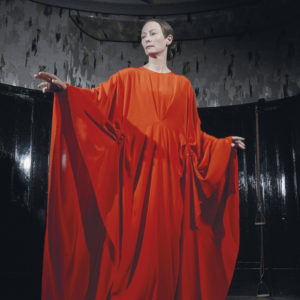 up making what should have been a hellish nightmare world, more cartoonish. Once again, less is often more and what isn’t shown remains more terrifying.
up making what should have been a hellish nightmare world, more cartoonish. Once again, less is often more and what isn’t shown remains more terrifying.
There are singular parts of the film that I appreciate and truly enjoyed, but the parts never quite come together into a cohesive whole. At least this is another film I can place under the heading of “Tilda Swinton being amazing” and the soundtrack has become one of my favorite compositions of the year. While the film does not work for me, I don’t begrudge those who love or even like the film. It takes a chance and for that I can applaud its presence, but the second a rendition of Suspiria becomes a narrative puzzle that can be solved I start to long for the disorientation of the original instead.


